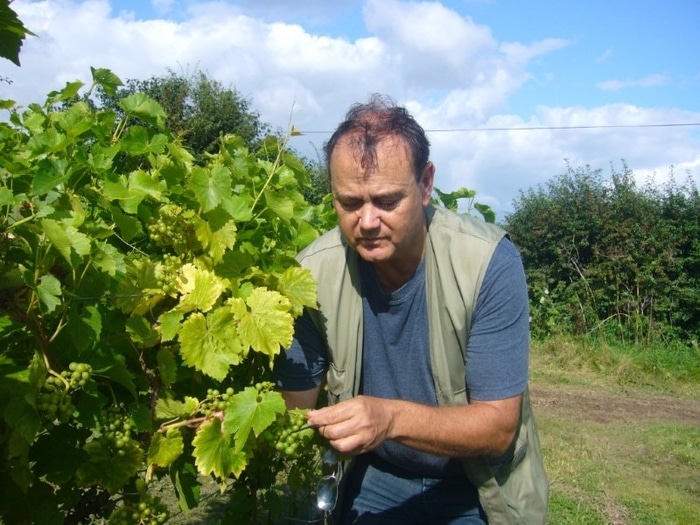Protect grape quality and rebuild reserves for next year – Vineyard – Rob Saunders, Chris Cooper
With picking of early cultivars about to begin, Hutchinsons' Rob Saunders and Chris Cooper examine how growers can ...
Protect the quality of later-maturing grapes and start rebuilding vine potential for next season.
When it comes to protecting grape yields and quality in the immediate run-up to harvest, botrytis remains the principle threat in many situations.
Disease risk is driven by several factors, not least the weather and the presence of any damage to grapes that may predispose them to infection, such as that caused by pests like SWD (see August’s article).
It is impossible to eradicate these risks, especially as initial infection could have occurred many weeks ago during flowering, with latent disease only now showing itself. Later infection risk increases further where swollen berries rupture, allowing mould to develop on split skins.
While latent infection cannot be undone, we can stop botrytis from spreading to other bunches, and this year there is a welcome addition to the armoury in the form of a new biological fungicide.

Rob Saunders

Chris Cooper
Botector contains two strains of the yeast-like fungus Aureobasidium pullulans, which reduces disease incidence by competing with botrytis pathogens for nutrients and space. Importantly, the product offers just a one day harvest interval, giving a much better opportunity to protect crops right up to harvest.
If the product lives up to expectations, it offers an exciting alternative to more traditional botrytis fungicide treatments, many of which require longer harvest intervals.
Any extra flexibility is welcome this year given the wide range of growth stages and crop maturity caused by May’s late frosts, which is complicating picking decisions in affected vineyards. Finding that optimum balance between the specific sweetness and acidity required by winemakers is always tricky, never more so than in years like this.
There are a number of nutritional products on the market, such as Lallemand’s Pro-Precocity, that can help boost grape quality, strengthen skins and promote even ripening, which may be worth considering, where crops are more variable.
Pre-harvest applications of the foliar potassium products such as Solupotasse or Potassium metalosate are beneficial as potassium has an important influence on sugar concentration and skin colour.
Downy mildew becomes the key foliar disease as harvest approaches and the weather turns wetter. The best protectants either have a harvest interval of at least 28 days, or a latest application timing expressed as “berries developing colour”. So in the run up to harvest, growers must rely on softer products such as Phorce and Zynergy, to preserve leaf function; a task which is made easier if control has been excellent earlier in the season.
Building next year’s potential
One area that often gets overlooked amidst the hectic workloads on vineyards at this time of year is the potential to use post-harvest nutrition to improve the winter hardiness of vines and build next season’s yield potential.
The nature of cool climate wine growing means that in many cases grapes are maturing as canopies begin senescing, thereby limiting the opportunities for any such post-harvest foliar nutrition. However, there may be the chance to do something on earlier maturing cultivars before leaves begin to senesce.
While some nitrogen is useful for building vine reserves before dormancy, avoid applying too much as this encourages sappy growth that is slower to lignify. Instead, focus on the micronutrients that are more commonly found to be deficient in vineyards, especially sites on chalky soils, such as magnesium, iron, zinc and boron.
Copper is another useful nutrient, as even just a small application to canes can have the useful side effect of inhibiting fungal development while the plant is lignifying, preventing stem botrytis and other pathogens from growing. For best results, apply copper with a deposit-promoting adjuvant to improve rain-fastness.
Phosphorus is also a useful post-harvest nutrient, for building root systems.
Of course, it is important to note that most UK grapes are grown on either the Guyot or Scott-Henry system, which means a large amount of material will be removed when vines are cut back, so vines must have sufficient time for nutrients to be absorbed via green leaves into the main stems before pruning commences.